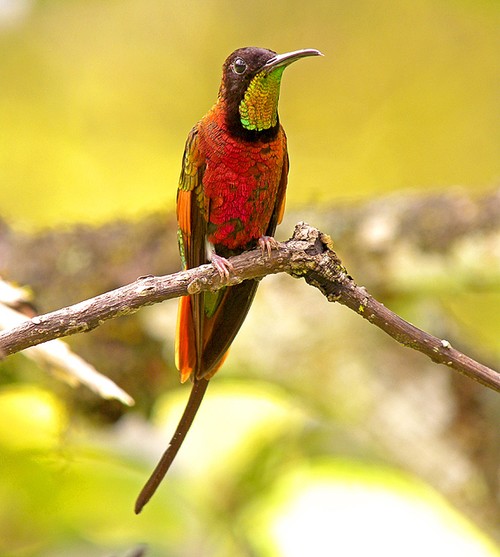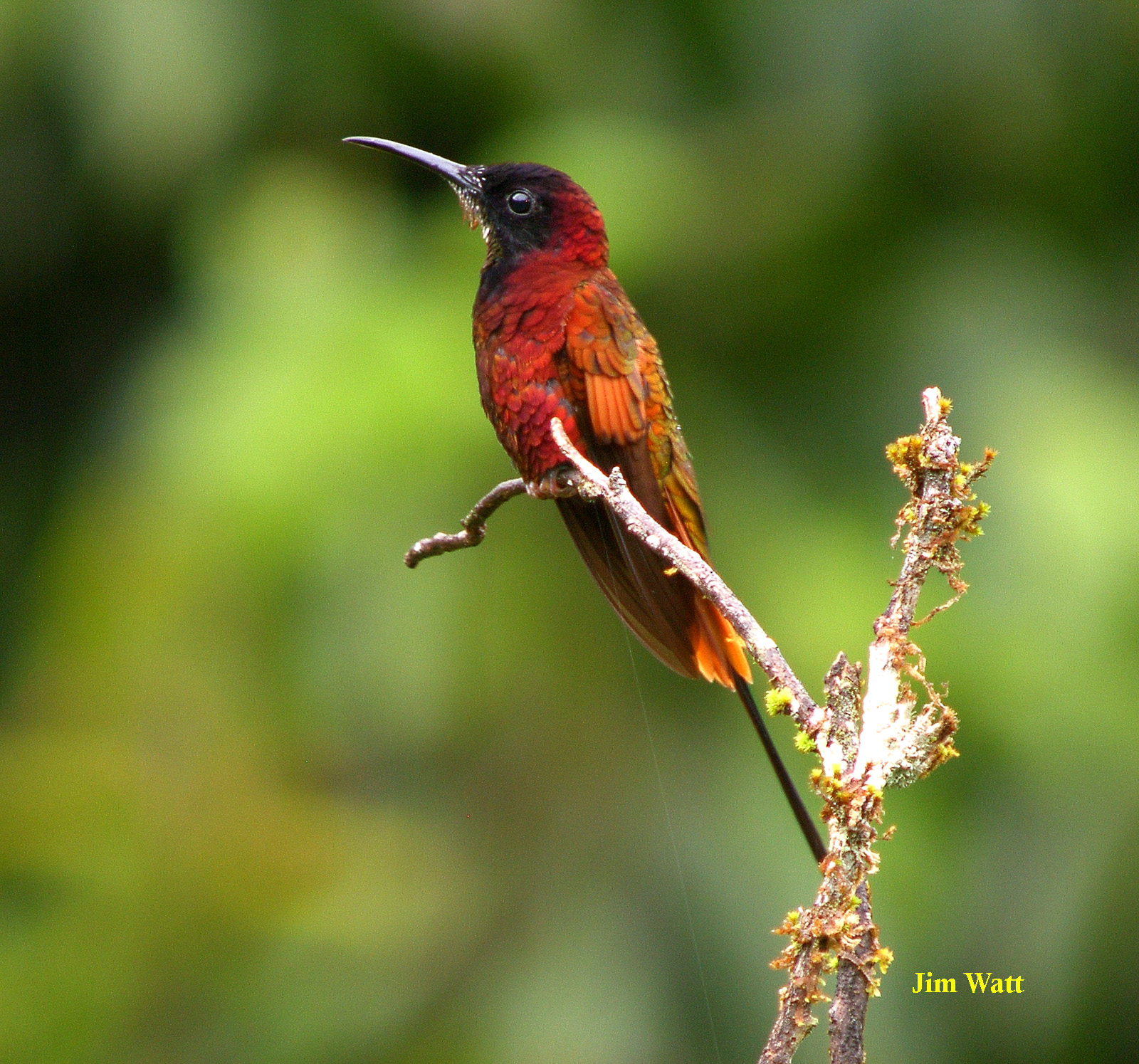
Topaza pella
SUBFAMILY
Trochilinae
TAXONOMY
Trochilus pella Linneaus 1758 Surinam. Four subspecies recognized.
OTHER COMMON NAMES
English: King hummingbird; French: Colibri topaze; German:
Rotnacken-Topaskolibri; Spanish: Colibrн Topacio.
PHYSICAL CHARACTERISTICS
Female 5.1–5.5 in (13–14 cm), male 8.3–9.1 in (21–23 cm, including
bill c. 1.6 in [4 cm] and tail 4.7–5.1 in [12–13 cm]);
female c. 0.35 oz (10 g), male 0.35–0.49 oz (10–14 g). A large
strikingly colored hummingbird. Male has straight black bill; top
and sides of head and neck velvet black; back glittering crimson
to purple, golden on uppertail-coverts; throat bright green with
a golden sheen, surrounded by a black band, underparts bright
red, undertail-coverts bronze; wings brown; central tail feathers
bronzy golden-green, outer rectrices chestnut, submedian tail
feathers elongated and crossed. Female bill similar to male’s;
back dark green; throat green with crimson discs, underparts
green with golden green discs, undertail-coverts iridescent
green; central tail feathers bronzy, next pair violet, outermost
pair chestnut. Immatures like adult female.
DISTRIBUTION
T. p. pyra: southeastern Colombia, eastern Ecuador, and northeastern
Peru to northwestern Brazil (Rio Negro) and south
Venezuela (Amazonas); T. p. pamprepta: eastern Ecuador (Suno,
Rio Napo); T. p. pella: southern Venezuela (east Bolivar) and
the Guianas to northern Brazil (Amapб); T. p. microrhyncha:
northcentral Brazil, along south bank of lower Amazon in
vicinity of Belйm.
HABITAT
Occurs in lowland rainforests up to 1,640 ft (500 m), mainly
inland. Frequently found in tree tops of forests around granite
outcrops and along gallery forests near river banks and creeks.
BEHAVIOR
Territorial. Males announce their presence by shrill calls
mainly given from tree tops. During display, male circles in
slow-motion manner around perched female.
FEEDING ECOLOGY AND DIET
Mainly seen foraging for nectar in the upper story of flowering
forest trees such as Inga and Bombax, but also visits flowers of
vines and epiphytes. Occasionally found in much lower vegetation
around inselbergs in Surinam where it forages for nectar
near the ground at flowering stands of Costus scaber and in
clumps of blooming Pitcairnia nuda. Insects are caught in the
air, often high above tree tops.
REPRODUCTIVE BIOLOGY
Breeds from January to April and again in July to November in
the Guianas; no nesting data from other areas. Nests found at
10–26 ft (3–8 m) often on vertical branches or in vines above
or near water. The cup-shaped nest, consisting of soft grayish
or brownish fibers of Bombax seeds and cobweb, is fairly small
compared with the size of the bird. Two eggs; incubation time
unknown; chicks black with some pale gray dorsal down; fledging
period 21 days. Young remain with female for three weeks.
CONSERVATION STATUS
Locally common but frequently considered rare due to its secretive
habits in the tree tops.
SIGNIFICANCE TO HUMANS
None known.
Photo Gallery of - Crimson topaz




 Animalia Life
Animalia Life